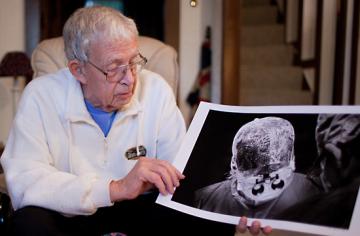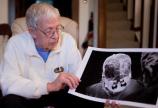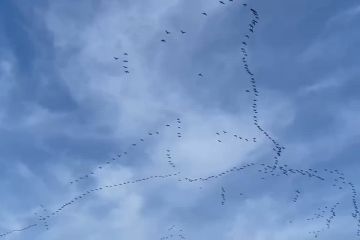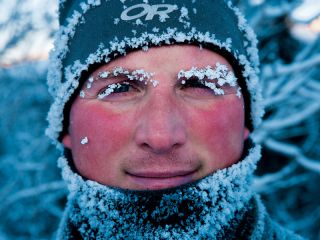Ted Grant photos take us behind the scenes with Island Medical Program students

His most famous photo is of Prime Minister Pierre Trudeau sliding down a banister. But of all he’s shot in 60 years as a photographer, Ted Grant’s favourite work is the photo series he has done of doctors and nurses at work.
It’s a project that began 30 years ago as Grant was lying on a gurney about to head into surgery at the Ottawa Civic Hospital. “I was on the table and all of a sudden I thought ‘What a great place to shoot. There are lights, there are people, there are all kinds of things going on.”
Later that year Grant asked the surgeon if he could follow him around with a camera for a week. The surgeon agreed. Two books and a Bravo documentary resulted from the years of shooting that included hospitals across Canada and the US. In the last five years he started photographing Island Medical Program students studying to be doctors at the University of Victoria.
The result is The Silent Observer, an exhibit of 30 digital black-and-white photos of the students that Grant followed through their days and photographed. The exhibit opened Feb. 8 at Maltwood Prints and Drawings Gallery at the McPherson Library.
____________________
Join Ted Grant for a free public lecture on his adventurous career as "Canada's father of photojournalism."
Ted Grant: The Silent Observer
Saturday, March 10th, 2 pm
McPherson Library room A003, lower level
(near Maltwood Prints and Drawings Gallery at the McPherson Library)
____________________
As a freelance photojournalist from the 1960s through 1990s, Grant travelled the far reaches of Canada shooting photo essays for the National Film Board and shooting world events for Weekend Magazine and The Canadian Magazine. He lost hearing in one ear while shooting the 1967 Six Days War in the Middle East. He covered every Winter and Summer Olympic Games from 1972 to 1992. Over 280,000 of his images are held in the National Archives of Canada and another 100,000 are in the National Gallery of Canada. UVic awarded him an honorary doctorate of laws degree in 2008.
It was during the 1968 Liberal convention that Grant took his famous shot of Trudeau sliding down a banister in the Chateau Laurier hotel. He was the only photographer present when Trudeau made his move.
“I heard people start to laugh and turned around and there he was. I went ‘Oh my God!’ Click!”
Working with medical students was no different than working with world leaders, says Grant, now 82. It’s a relationship based on trust, one in which he stays respectfully in the background with a trio of Leica digital cameras around his neck.
“I shoot by what I feel. There isn’t anything analytical going on. It’s like ‘Geez, look at that.’ Click.”
He took photos of medical students in class at UVic as well as on rounds at two Victoria hospitals and at teaching clinics up and down Vancouver Island.
Medical student Amy Jean Singleton-Polster (IMP Class of 2012) says she was nervous at first as Grant followed her and another student as they conducted a foot care clinic at Our Place, a Victoria homeless shelter.
“But it became easier, and he snapped away as we washed and clipped. He was always very professional yet fun to work with,” she says.
Grant’s favourite shot from the project is of freckle-faced student Anna Isbister (IMP Class of 2009) examining a patient’s eyes.
“Her eyes are beautiful and so intense; there is almost a full frame of her face and the instrument she’s using—so cool.”
The Silent Observer runs until April 2 at the Maltwood Prints and Drawings Gallery in McPherson Library. An opening reception with Ted Grant in attendance will be held Tuesday, March 6, from 4 to 5:30 p.m. More information: http://uvac.uvic.ca
About the Island Medical Program
The Island Medical Program (IMP), based at UVic, was established in 2004 to increase the number of new physicians in BC and encourage them to practice in under-served areas of the province. The IMP is one of four distinct geographical sites of the distributed UBC MD Undergraduate Program, the others being the Northern Medical Program at the UNBC, the Southern Medical Program at UBC-Okanagan and the Vancouver Fraser Medical Program at UBC-Vancouver.
The four-year medical program at the IMP strives to provide students with a medical education experience that reflects the health-related challenges facing mid-sized urban Island communities, as well as smaller, remote and coastal communities, which include both elderly and Aboriginal populations.
About the Division of Medical Sciences
UVic’s Division of Medical Sciences supports both medical education and the university’s ongoing commitment to an integrated and multidisciplinary approach to health research.
The division is home to faculty, clinicians and graduate students working on leading–edge research, with a focus on neurosciences. In September 2011, a multidisciplinary Neuroscience Graduate Program was established at UVic and based in the division. Scientists and students in this research area are studying Fetal Alcohol Spectrum Disorder (FASD), inherited developmental disorders, Alzheimer’s disease, stroke and how the process of aging changes the brain. Other division scientists are conducting clinical research in anesthesiology, cardiology, psychology and community genetics—the latter with a focus on Northern and Indigenous health issues.
Photos
In this story
Keywords: photography
People: Ted Grant




